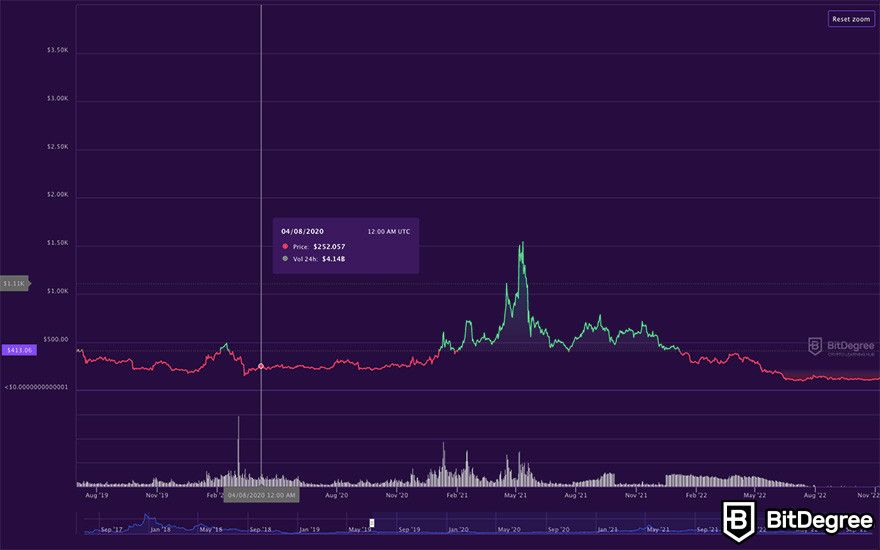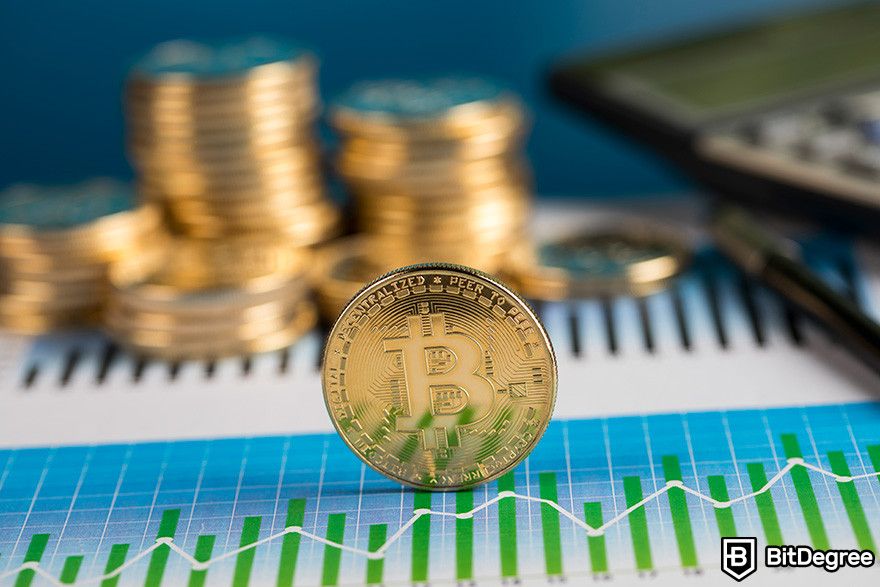Upcoming Bitcoin Cash Halving Date – BCH Halving Countdown
Check the Bitcoin Cash halving countdown, learn about the phenomenon, and understand its significance to the rest of the crypto market!
Mục lục bài viết
When is the Next Bitcoin Cash Halving?
The next Bitcoin Cash halving is estimated to occur in 2024. For a more precise time frame, take a look at our countdown tool above.
When Will the Last Bitcoin Cash Halving Happen?
The last BCH halving date is expected to occur around the year 2148. The exact time will depend on a variety of different factors, such as block mining speed (difficulty), major changes that may impact the underlying network, and so on.
What is the Bitcoin Cash Halving History?
To date, Bitcoin Cash has only had a single halving event that took place back on April 8, 2020. While the halving should have coincided with that of Bitcoin, it did not – this was due to the fact that BCH used a different mining algorithm for some time right after launch. This enabled faster block mining speeds, and thus, the BCH halving date came sooner than that of BTC.
What is Bitcoin Cash Halving?
Definition-wise, Bitcoin Cash halving sounds like a pretty simple concept – it’s an event that happens every 4 years (or so), and its purpose is to halve the mining profits that BCH miners make.
Let’s take it one step further, though, and explore this concept a bit deeper.
How Does Bitcoin Cash Halving Work?
If you’re not aware, Bitcoin Cash is actually closely related to Bitcoin – this is something that might be obvious from the name of the network, as well. Essentially, similar to another popular project called Bitcoin SV (Satoshi Vision), Bitcoin Cash was a hard fork from BTC. The new network was forked and created back in 2017.
While the reasons and trivia behind the fork aren’t something that’s important to this BCH halving article, something that is important is the way that Bitcoin Cash halvings work. Essentially, everything is exactly the same as with Bitcoin.
Again, that makes sense – being a fork of BTC, BCH essentially employs all of the same fundamental technologies as its predecessor. However, if that’s the case, why doesn’t the Bitcoin Cash halving correlate with the Bitcoin one?
Simple – as mentioned earlier in the text, when it was first launched, Bitcoin Cash employed a different mining algorithm before transitioning back to that of Bitcoin. This previous algorithm meant that blocks were mined faster, and this, in turn, sped up the halving event.
Confused? Take a look at the table below:
Date
Block Height
Block Reward
April 8, 2020
630,000
6.25 BCH
Est. 2024
840,000
3.125 BCH
…
…
…
Est. 2148
?
?
Table: Bitcoin Cash halving schedule
The crucial point here is that both Bitcoin and Bitcoin Cash halving dates depend not on some trivial day in the year but rather on block height. With both cryptocurrencies, the halving event happens every 210,000 blocks.
Since Bitcoin Cash was launched in 2017 and employed a different mining algorithm at the beginning, the first BCH halving date was April 8, 2020 – it was initiated at block 630,000. The second halving is scheduled to happen in 2024 – once again, for a more precise timeframe, check out our countdown above.
Since the final Bitcoin halving is said to take place sometime in 2140, and BCH was launched after two BTC halvings had already taken place, 4 years apart, it would make sense that the final halving of BCH will happen sometime in 2148 (since the maximum total supply of both cryptocurrencies is the same as well).
Safe to say, that’s a very long time in the distant future.
Whether it be the first BCH halving, or the upcoming one in 2024, there is one topic that remains equally as discussed – the price of Bitcoin Cash.
How do Bitcoin Cash Halvings Affect the Price of BCH?
With crypto halvings being a direct tool to combat the inflation of the underlying asset (Bitcoin creator Satoshi Nakamoto’s way of avoiding supply / demand discrepancies), it would make sense that once a traditional halving happens, the price of the asset goes up. At least in theory.
However, time and hindsight have shown that this is far from being the case in many of the halving instances. Some cryptocurrencies are simply not big enough for the halving events to cause major changes in their price, while others are impacted too much by the general market sentiments at the time when their halving takes place.
What’s the situation with Bitcoin Cash halvings? Well, take a look at the chart below:

The red dot represents the price of Bitcoin Cash on the day when the halving happened. BCH experienced a sharp drop in price right before the halving, and once the actual event finally did occur, it didn’t really impact its price tag all that much.
Instead, Bitcoin Cash kept on fluctuating around the same price level for a bit over half a year. This is, once again, not very surprising.
At the same time, though, the chart doesn’t really tell the whole story. While the price of the asset in question remained relatively unswayed, there was quite a bit of drama happening in the background right after the first Bitcoin Cash halving.
The Significance of Bitcoin Cash Halvings
BCH is a pretty unique crypto network as far as halving events go. This is because you would struggle to find a network that has experienced more scrutiny and doubt surrounding this phenomenon. Allow me to explain.
Miners are the group of people who are most impacted by halving events. This is self-explanatory – it is their mining rewards that get cut in half, after all! Coincidentally, miners are also the ones who keep the network secure and protected from any potential high-scale attacks.
The curveball here is that miners are profit-driven. If there’s no profit to be made with a specific crypto asset, or if the profits get cut in half, a miner can simply choose to transition to another cryptocurrency. This is what happened en masse after the BCH halving date.
With Bitcoin Cash, this is actually very simple to do – since the asset employs the same mining mechanics as Bitcoin and Bitcoin SV, jumping between all three of them is quite hassle-free.

Now, the Bitcoin Cash halving caused a considerable number of miners to abandon the network in search of better profits. As these miners exited the BCH network, the mining difficulty started rising even more, which made it further unprofitable for existing miners to mine BCH coins. You get the idea – it’s an entire cycle.
While some major figures in the BCH space were optimistic, even they couldn’t deny the fact that miners are leaving rapidly. Of course, things got better with time, and once profits started rising, some of the miners came back. However, all of this is hindsight – something that the then-BCH community didn’t have.
All of that being said, as you can probably expect, the upcoming Bitcoin Cash halving is a somewhat controversial topic, as well. With the spotlight pointed at the subject being rather delicate, many people fear that history will repeat itself and that a major part of miners will simply switch to another crypto asset, causing the halving to be obsolete, positive asset price movement-wise.
This is, however, just speculation – no one really knows what the situation will be in 2024, nor what position the entire crypto market will find itself in either. Whether you’re a BCH miner, an investor, or simply a crypto enthusiast, in general, one thing’s for sure, though – keeping an eye on the Bitcoin Cash halving dates can be really beneficial!
Summary
Now that we’ve covered all of the mains aspects of the Bitcoin Cash halvings, let’s have a quick rundown of some key points and takeaways to remember:
- Bitcoin Cash halving is a “traditional” halving event during which the rewards for mining a BCH block are halved;
- The BCH halving happens every 4 years and is very similar to Bitcoin in the way that it works;
- There has only been a single BCH halving to date – it took place on April 8, 2020;
- The current BCH block reward is 6.25 BCH, but after the next halving (2024), the reward will be halved to 3.125 BCH per block;
- The purpose of the Bitcoin Cash halving is to decrease the circulating supply of new BCH coins and, thus, cause scarcity whilst driving up the demand;
- While BCH didn’t experience any notable price swings after the first halving, many miners went away from the network in search of more-profitable mining options.
If you keep all of the above-mentioned points in mind, you should have a pretty good understanding of Bitcoin Cash halvings and how they influence both the Bitcoin ecosystem, as well as the rest of the crypto market as a whole.
Conclusions
If you’d like to learn more about halvings as a standalone phenomenon, make sure to take a look at our Bitcoin halving date countdown. On top of that, if BCH halvings are what interests you specifically, you can also bookmark this page so that you can access the countdown easily whenever you want!











